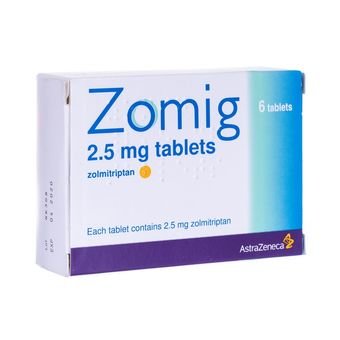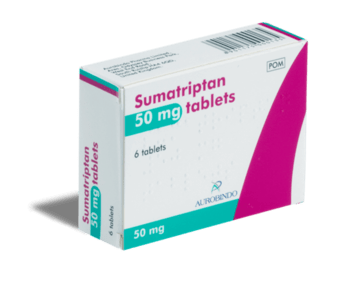Exploring the Different Types of Migraines: Symptoms, Triggers, and Treatments
A migraine is a complex medical condition that is often debilitating for the individual. Migraines present with a wide variety of symptoms, most commonly a painful, pulsing or throbbing headache on one side of the head.
While migraines mostly go unreported and undiagnosed, it affects more people in the UK than diabetes, asthma, and epilepsy combined. As one of the most common neurological conditions, migraines affect approximately 11 million people in the UK. It is unknown how many children are affected by migraines.
It is estimated that among the UK population, there are over 190,000 migraine attacks every day. Migraines are more prevalent in women, affecting two to three times as many women as men. This may also be due to underreporting and underdiagnosis in the male population.
From a healthcare provider's perspective, educating patients reduces unnecessary primary and secondary care visits.
Comprehensive migraine information provides patients with the guidance that they need to self-manage their condition after diagnosis. Improving quality of life as patients can result in better control of migraines and associated symptoms.
Cloud Pharmacy aims to provide our customers with improved health literacy. We aim to provide high-quality resources to empower our patients, giving you control over your own care journey.
What are Common Migraine Triggers?
Migraines can be triggered by almost anything, with a migraine attack beginning anywhere between six hours and two days after the trigger occurs.
Common triggers of migraine attacks include:
- Changes in routine
- Diet
- Stress and anxiety
- Consuming too much caffeine
- Having too much or too little sleep
- Mild dehydration
- Environmental factors
- Hormones
- Looking at a computer screen for too long
- A head injury
- Teeth grinding
- Drug usage
- Light
- Tense muscles
Common Migraine Symptoms
The most common symptom of a migraine is an intense headache on one side of the head. The pain is typically a moderate or severe throbbing. Other common symptoms associated with a migraine include:
- Nausea
- Vomiting
- Sensitivity to sound and light
There are different types of migraines that present with different types of symptoms. Not everyone will develop or experience the same symptoms.
Types of Migraines
Migraine Without Aura
This is the most common type of migraine in both adults and children. It is also called “common migraine” or “hemicrania simplex.”
Migraines without ‘Aura” are migraine attacks that occur without a warning sign (aura) of the attack. These migraine attacks (without aura) generally last between four hours and three days if it is not treated or the treatment is not effective.
The frequency of these migraine attacks varies between persons, happening several times a week or a couple of times a year.
Common symptoms include:
- A throbbing, painful headache on one side of the head
- Nausea or vomiting
- A sensitivity to light, sound, and/or smells
Migraine With Aura
Migraine with aura, also commonly called “classic migraine”, is very common. It occurs in one in three people.
Aura is the warning sign that a migraine attack is about to begin. Aura symptoms generally occur before the headache stage of a migraine attack. Some people may experience aura symptoms without the headache stage occurring.
Common aura symptoms may be visual, sensory, or motor.
Visual aura is the most common type of aura and can present in many forms. Normally, individuals will experience a zig-zag line starting on one side and moving across the field of vision. Sparkling, diamond-shaped, or flashing lights may also be present. A few individuals may have blurring or a dark spot in the centre of their vision. These symptoms may last between five and 60 minutes.
Sometimes, scotoma (temporary dark holes in the vision) may present after the visual symptoms go away. This should not be confused with an ocular or retinal migraine.
Sensory aura symptoms may present as tingling (pins and needles) or numbness in a part of the limb. Typically, individuals can observe the progression of these symptoms as they start in one part of the body and move. Language and speech may also be affected, making it difficult to articulate words.
Motor aura is a much rarer form that presents as weakness in parts of the body. In some individuals, motor aura may be genetic.
Chronic Migraine
A chronic migraine is characterised as having a headache on at least 15 days per month and, for at least eight of the days, having migraine symptoms. This will occur for at least 3 months to be defined as chronic. It is not fully understood what causes chronic migraine.
Common symptoms of a chronic migraine include:
- Frequent and persistent headache
- Nausea
- Vomiting
- Increased sensitivity to sound, light, or smells
Individuals may also experience other symptoms such as aura, vertigo and dizziness.
Some people with chronic migraine may find non-drug treatments such as supplements (riboflavin, magnesium, or co-enzyme Q10), acupuncture, and devices (gammaCore) helpful alongside other treatment options.
Menstrual Migraine
Menstrual migraine or hormonal migraine refers to migraine attacks that are triggered by menstruation. These migraine attacks generally are less responsive to treatment and are more severe. In some individuals, these migraine attacks may last longer than other types of migraines.
Most women will also experience migraine attacks during other times of the month, especially during changes in their hormones. Other causes of these migraine attacks may include menopause, pregnancy, or the combined pill (combined oral contraceptive pill).
Hemiplegic Migraine
This is a rare type of migraine that causes paralysis on one side of the body (hemiplegia). Individuals with this disease are described as presenting with a migraine with aura. Hemiplegia is an aura symptom.
The temporary weakness experienced may also accompanied by other common aura symptoms such as:
- Communication difficulties affecting the individual's ability to write and understand language
- Visual disturbances, such as zig-zags, changes in eyesight, or sparkles
Some people may also experience:
- Confusion
- Vertigo or dizziness
- Ringing in the ears or hearing problems
These symptoms may be concerning as they mimic those of a stroke. The temporary weakness may last from one hour to several days. For most people, it usually leaves within 24 hours. A headache may occur before, after a hemiplegic migraine, or not at all.
There are two different types of hemiplegic migraine: familial hemiplegic migraine (FHM) and sporadic hemiplegic migraine (SHM).
- FHM is a form of the disease that is genetic (runs in the family). When FHM occurs, at least two or more people in a family will experience temporary weakness as a symptom of their migraine. There are three identified gene mutations, SCN1A, CACNA1A, and ATP1A2, found in hemiplegic migraine. These gene mutations cause the related calcium channel in nerve cells to work incorrectly on occasion. A hemiplegic migraine attack occurs when the nerve cells work incorrectly. These gene mutations are not always present in every family diagnosed with FHM.
- Sporadic hemiplegic migraine (SHM) is diagnosed when there is no known family or inherited connection and a person presents with all the physical symptoms of FHM. The cause of SHM is unknown but may be attributed to a sporadic or novel gene mutation. Individuals with SHM may experience more aura symptoms with their migraine attacks.
Vestibular Migraine
Vestibular migraine is also called migraine-associated dizziness, migrainous vertigo, and recurrent vertigo. This type of migraine causes balance or vertigo symptoms with or without the headache stage of a migraine attack. The main symptom of this migraine is dizziness, which may last from seconds to days in some individuals. Symptoms associated with vestibular migraine include:
- Nausea
- Vomiting
- Flushing
- Sweating
- Diarrhoea
- Visual changes (blurring, difficulty focusing, and flashing lights)
Some individuals may also experience difficulty concentrating, sensitivity to bright lights and loud sounds, and feel extreme fatigue and tiredness.
Common triggers for vestibular migraine include hormonal change, poor sleeping habits, stress and anxiety, dietary triggers, and hunger and dehydration.
Retinal Migraine
Retinal migraines affect the eyes and may even cause temporary vision loss in one eye. It is less common than other migraine types. Retinal migraines usually only affect one eye, with symptoms appearing suddenly. Symptoms of retinal migraines include:
- Vision loss - usually lasts 10 to 20 minutes but can last up to 1 hour
- Nausea or vomiting
- A headache
- Other eye symptoms (zig-zag patterns, blurred vision, and flashing lights)
Some people may experience eye symptoms without a headache.
Status Migrainous
Status migrainous, also called intractable migraine, is characterised as an especially severe and long-lasting form of migraine headache. This type of migraine is uncommon, only affecting 1% of migraine sufferers.
Status migrainous symptoms include the same common symptoms of a regular migraine:
- Dizziness
- Nausea and vomiting
- Throbbing pain on one or both sides of the head
The severe and intense symptoms typically last longer than 72 hours and may require a hospital visit for effective treatment.
Silent Migraine
A silent migraine is also called migraine aura without headache. This type of migraine typically occurs with all of the common migraine symptoms, such as nausea, aura, and dizziness. Silent migraine attacks normally consist of three main stages:
- Prodrome (take a look at our guide that discusses the migraine prodrome phase to find out more)
- Aura
- Postdrome
Although these stages do not include the headache stage, these migraines are still uncomfortable and may be disruptive to daily life.
Abdominal Migraine
This is a common migraine affecting 4 in 100 children and some adults. Children typically outgrow getting an abdominal migraine; however, this may develop into a migraine headache. There is very little known about abdominal migraine in adults.
Symptoms of abdominal migraine include:
- No headache during attacks
- Regular attacks of moderate to severe stomach pain (lasts from 2-72 hours)
- Nausea and vomiting during attacks
- Feeling normal between attacks
Abdominal migraine is an idiopathic disorder, as there is no known understanding of why people get it. Possible associations may exist with other conditions, such as migraine limb pain or cyclical vomiting.
Migraine with Brainstem Aura
This type of migraine is historically known as basilar-type migraine. Migraine with brainstem aura symptoms often gradually develops and occurs before or with a normal migraine headache. About 1 in 10 people who get a migraine with a typical visual aura have migraine with brainstem aura.
Symptoms of migraine with brainstem aura include:
- Double vision
- Slurring of speech
- Ringing in the ears
- Vertigo
- Pins and needles in both arms and/or the legs
- Temporarily decreased consciousness
- Ataxia
Migraine medications available in the UK
Cloud Pharmacy offers the following prescription medications for the treatment of migraine attacks:
- Zomig Tablets 2.5mg: Zomig is used to provide fast-acting pain relief and alleviate the symptoms of a migraine. It is effective in relieving migraines with or without aura
- Zomig Nasal Spray: This nasal spray is used to treat migraines with or without aura and its associated symptoms
- Zolmitriptan Oral/Orodispersible: This medication is used for the treatment of acute migraine headaches and associated symptoms
- Sumatriptan Tablets: Sumatriptan is used to relieve a migraine and its associated symptoms. This is a short-acting medication that provides some relief after 30 to 60 minutes
- Rizatriptan Tablets 10mg: This medication is used to treat common symptoms of a migraine attack
- Imigran Nasal Spray: This nasal spray is used to provide relief from an acute migraine attack and its associated symptoms
- Almotriptan 12.5mg Tablets: This medication is used to provide relief from acute migraines and its associated symptoms. This medication can be prescribed to both adults and teenagers
- Migraitan 50mg Tablets: Migraitan contains the active ingredient Sumatriptan and is used to relieve migraines and commonly associated symptoms
Conclusion
It is important to understand the different types of migraines as it bridges the gaps in knowledge, allowing patients and individuals to advocate for themselves and play an active role in their treatment and management.
If you do suffer from any type of migraine, it is important to seek advice from a licenced pharmacist or healthcare provider so that you can get a treatment plan that is personalised to your needs.
Cloud Pharmacy is a UK-registered pharmacy that ensures that you safely get the correct treatment you need when needed. We provide a bespoke service to each of our customers to provide helpful information resources to increase health literacy. If you struggle with migraines and are looking for migraine pain relief medication, get in touch today.




















